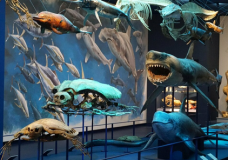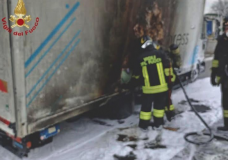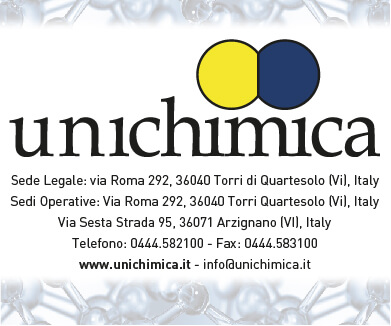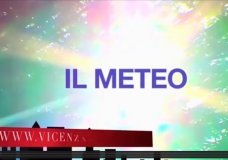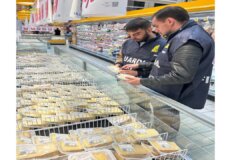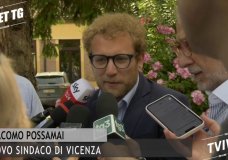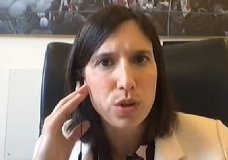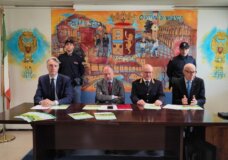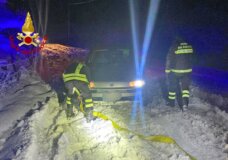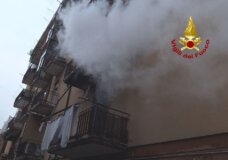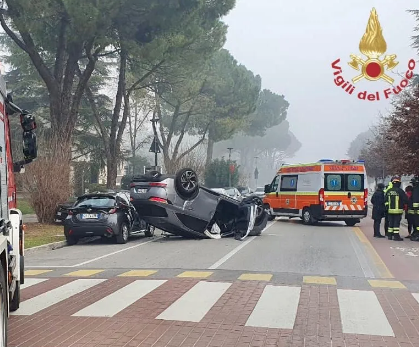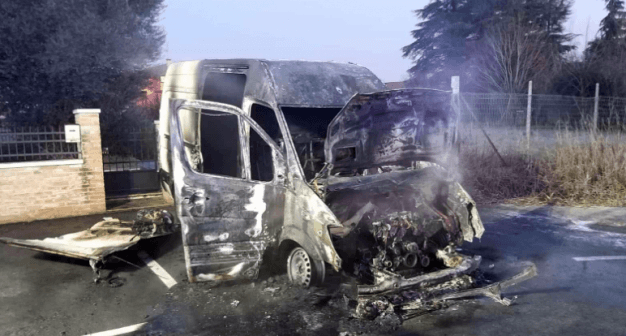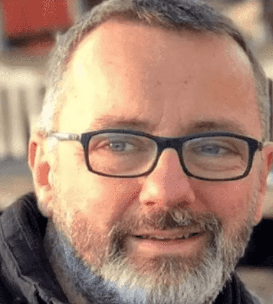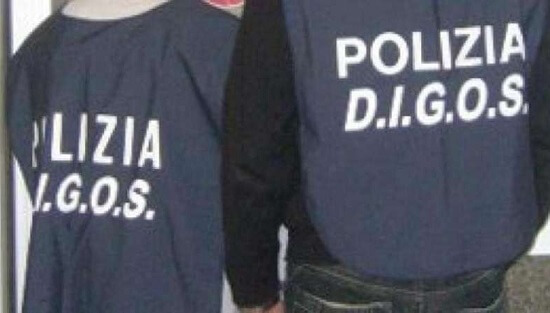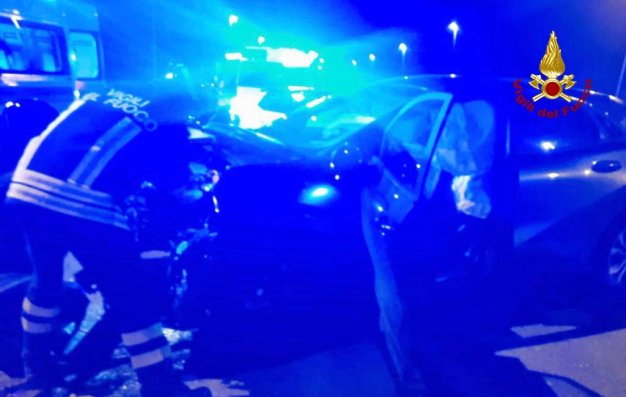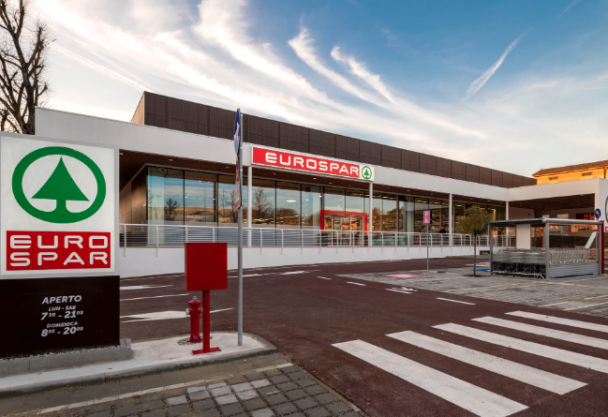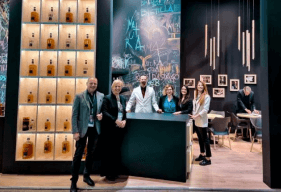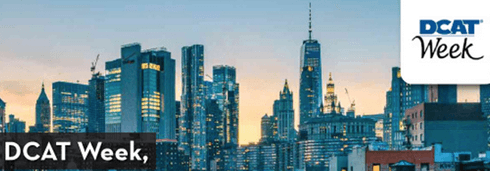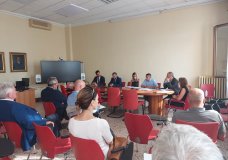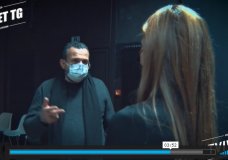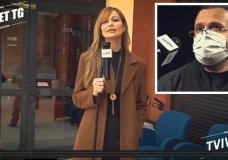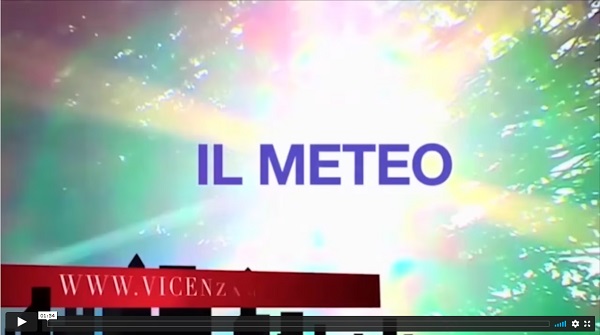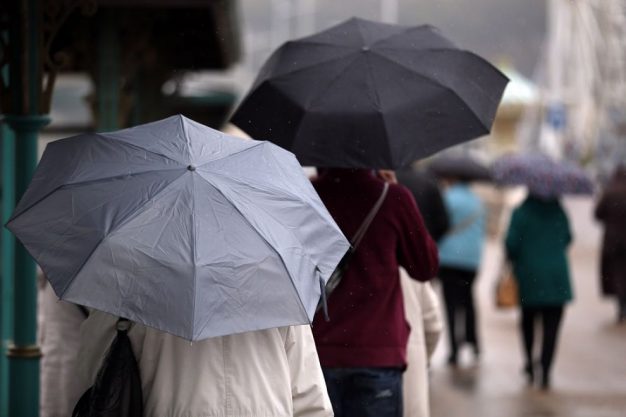VICENZA – Lancio di Nasa per l’Italia di Space Apps, prima edizione a Vicenza
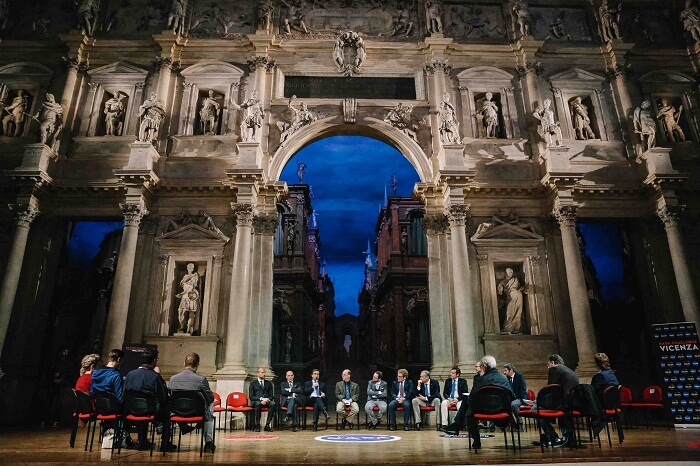
Il rappresentante della NASA in Europa, Timothy Ryan Tawney, al Teatro Olimpico per lanciare NASASpaceApps per la prima volta a Vicenza
Oggi, in occasione del kick-off italiano di Space Apps 2017 e della prima edizione di Space Apps Vicenza il Teatro Olimpico ha ospitato il rappresentante della NASA in Europa, Timothy Ryan Tawney.
All’evento, aperto dai saluti istituzionali del vice sindaco di Vicenza Jacopo Bulgarini, hanno partecipato Christopher Wurst, Console USA per la Stampa e la Cultura; Giacomo Possamai, delegato alle politiche giovanili del Comune di Vicenza; Pietro Francesco De Lotto, Direttore Generale di Confartigianato Vicenza e il prof. Marino Quaresimin in rappresentanza della Fondazione Studi Universitari di Vicenza.
SPACE APPS CHALLENGE, il più grande hackathon mondiale promosso e organizzato dalla NASA a partire dal 2012, si terrà il 29 e 30 aprile contemporaneamente in oltre 200 città del mondo e sarà dedicato alle scienze della Terra.
Fin dalla sua prima edizione nel 2012 Space Apps Challenge, un progetto della Divisione Scienze della Terra della NASA, è diventato il più grande hackathon mondiale, in grado di coinvolgere migliaia di partecipanti ogni anno in tutto il mondo, cittadini che lavorano con la NASA per ideare grazie all’accesso a dati open source soluzioni innovative per affrontare le sfide che si pongono alla vita sulla Terra e all’esplorazione dello spazio. Space Apps richiama comunità di innovatori locali che si riuniscono in diverse città dei sei continenti per avere idee e creare soluzioni. Team di esperti di tecnologia, scienziati, studenti, imprenditori, mentori lavorano insieme per 48 ore utilizzando I dati messia disposizione dalla NASA per trovare risposte alle sfide più pressanti poste al nostro Pianeta.
La prima edizione di Space Apps Vicenza è il risultato della proficua cooperazione tra Comune, Consolato Generale degli Stati Uniti a Milano, Confartigianato Vicenza e Fondazione Studi Universitari.
L’evento vicentino, che sarà ospitato presso la sede dell’Università a Vicenza, ha riscosso un immediato successo e conta già oltre 160 partecipanti (al 26 aprile). Per prendervi parte non ci sono limiti di età, né sono richiesti profili particolari: è fondamentale una propensione alle nuove tecnologie e alla creatività (tra gli iscritti figurano ad esempio anche un biologo molecolare e un veterinario, oltre a imprenditori di startup, ricercatori, professionisti, universitari). Cinque gli istituti vicentini che hanno aderito all’iniziativa (Istituto Tecnico Industriale “Rossi”, I.P.S.I.A. “Lampertico”, Istituto Tecnico Tecnologico e Liceo Artistico “Canova” e Liceo “Fogazzaro” di Vicenza, Istituto Tecnico Industriale “De Pretto” di Schio) i cui studenti, assieme a quelli della High School della base americana di Vicenza, andranno a formare squadre miste con un massimo di sei componenti.
Space Apps prenderà il via alle ore 8 di sabato 29 aprile e terminerà alle 18.30 di domenica 30 aprile (notte compresa) con le premiazioni dopo che le squadre in gara avranno presentato (dalle ore 16) i propri progetti.
L’incontro stampa con Timothy Tawney ha rappresentato l’avvio della maratona di quest’anno, dedicata alle scienze della terra. Tawney ha ringraziato le istituzioni locali di Vicenza “per aver accolto con entusiasmo la proposta di ospitare la Space Apps Challenge. Il vostro supporto è stato molto apprezzato. “ Tawney ha spiegato che l’intento della NASA nell’organizzare Space Apps Challenge è stato quello di “coinvolgere una vasta comunità nella riflessione su come lo spazio può contribuire alla vita quotidiana sulla terra. Space Apps Challenge unisce la tecnologia e gli open data raccolti dalle missioni e resi disponibili dalla NASA con il talento e l’abilità di volontari sparsi in tutto il mondo allo scopo di far progredire l’esplorazione dello spazio e migliorare la qualità della vita sulla Terra.”
Christopher Wurst, Console per la Stampa e la Cultura presso il Consolato USA di Milano, ha raccontato che la scelta di portare Space Apps a Vicenza non è stata casuale. “La Missione Diplomatica degli Stati Uniti in Italia ospita Space Apps da cinque anni. Fino alla scorsa edizione, solo a Roma e Napoli. L’anno scorso abbiamo chiesto ed ottenuto di avere un’edizione anche nel Nord Italia e l’aspettativa era di organizzarla a Milano. Ma in quel periodo sono venuto a Vicenza per parlare ad un folto gruppo di studenti. Ne sono rimasto talmente ben impressionato da decidere che Space Apps doveva essere ospitato qui.”
“Siamo onorati di accogliervi nella nostra città e, in particolare, in questo magnifico teatro – ha dichiarato il consigliere comunale delegato alle politiche giovanili Giacomo Possamai – che ben si presta alla presentazione della prima edizione vicentina del più grande hackathon mondiale promosso e organizzato dalla NASA in più di 200 città del mondo. Si tratta di un gioiello architettonico e culturale che da 500 anni continua a stupire per la sua bellezza. Sarà una straordinaria occasione per studenti, scienziati, imprenditori e appassionati di scienze e tecnologia per trovare una risposta creativa e innovativa alle sfide poste al nostro pianeta, in primis la grande minaccia del cambiamento climatico”.
“Non è paradossale la scelta di ospitare un evento come il NASA Challenge nel teatro coperto più antico del mondo per due ragioni – ha aggiunto il vicesindaco e assessore alla crescita Jacopo Bulgarini d’Elci –: innanzitutto perché anche il Teatro Olimpico è un capolavoro di inventiva, innovazione e creazione. In secondo luogo per la fantastica locuzione latina che sovrasta la scena palladiana, ovvero “hoc opus hic labor”, motto dell’Accademia Olimpica e verso dell’Eneide di Virgilio che ci ricorda come per raggiungere un risultato straordinario servano uno sforzo, un impegno e una determinazione adeguati”.
“Non è casuale – ha commentato Pietro De Lotto, direttore di Confartigianato Vicenza – la scelta di presentare questa manifestazione all’interno del Teatro Olimpico di Palladio, perché siamo tutti impegnati affinché anche il nostro mondo si avvii verso un nuovo Rinascimento, dove la manifattura incontra l’innovazione attraverso processi basati sulla competenza. La collaborazione di Confartigianato è stata richiesta esplicitamente dal Comune di Vicenza grazie alle nostre positive esperienze nella gestione di eventi di questo genere: ne siamo felici e orgogliosi”.
Space Apps Challenge 2017
(intervento di Timothy Ryan Tawney – rappresentante della Nasa in Europa)
-In lingua inglese-
• Thank you, representatives of the City of Vicenza (Vee-chenza), the U.S. Consulate General in Milan (Mr. Wurst), Confartigianato (Mrs. Veller), Fondazione Studi Universitari (Mr. Fortuna), members of the University and the community, it is my great pleasure to be here today to kick off the National Aeronautics and Space Administration’s, also known as NASA, Space Apps Challenge 2017.
• I want to start by thanking all of the local institutions of Vicenza, on behalf of NASA, for enthusiastically embracing the space apps challenge and agreeing to act as one of the hosts this year. The support is greatly appreciated.
• And while the official start of the two day hackathon is still a few days away, we are here in Vicenza, for the first time, as an unofficial launch to several days of fun as part of the 2017 Challenge.
• I also want to thank the U.S. Diplomatic Mission to Italy for assisting in the Space Apps Challenge planning, specifically the U.S. Consulate General in Milan for organizing this first time event, the U.S. Consulate General in Naples for organizing the event in Naples for the third time, and the U.S. Embassy in Rome for organizing the event in Rome for the fifth time.
• There are two other Challenge sites in Italy this year, in Turin and Milan that self-organized their participation and we congratulate them on their participation as well.
• This year marks the sixth year of NASA’s International Space Apps Challenge – a now annual, international mass collaboration held over a 48-hour period in cities around the world.
• It started in 2012, originally as a technology initiative. More recently, the lead has shifted to the Applications Division in our Office of Earth Science in the Science Mission Directorate – hence the focus this year on Earth Science.
• NASA launched the Space Apps Challenge to get a broader community interested in and thinking about what space can do for our daily lives. The Challenge pairs openly available data supplied through NASA missions and technology with the talent and skill of passionate volunteers from around the planet in order to advance space exploration and improve the quality of life on Earth.
• And don’t let the name fool you… it’s not just about apps. Participants can tackle a challenge using robotics, data visualization, hardware, design and many other specialties.
• We invite students and professionals, engineers and artists, coders and storytellers from all corners of the globe to collaborate, engage with NASA data and products, and solve challenges that we face on Earth and in space.
• Last year’s hackathon was our largest yet, with more than 160 events and 15,000 people participating across 6 continents. Participants from 61 countries around the world worked together in teams during the 2-day sprint to develop over 1300 projects.
• These projects showcased innovative and creative open source solutions, valuable not just to NASA, but also the global community. Space Apps 2016 presented participants with 26 challenges in the fields of Technology, Aeronautics, Space Station, Solar System, Earth, and the Journey to Mars.
• Some of the most popular challenges included creating a crowdsourced platform to compare environmental changes with symptoms of respiratory disease, building an educational app to help young students locate the moon, or developing an app to support local drone operators.
• This year, our global community of thousands will be focused on tackling challenges that hit close to home, as we address challenges we face on Earth. Earth is a complex and dynamic system that still holds many mysteries.
• Year round, NASA helps shed light on Earth’s many components including oceans, terrains, and living things. With unique vantage points in air and in space, NASA collects high-quality data covering all parts of the planet over time to tell us more about the world we live in, and to predict the future processes on Earth.
• Our five challenge categories address human-environment interactions, the hydrosphere and cryosphere, natural disasters and risks to public health, ecological systems, and Earth science and space technologies.
• To quote NASA’s Director of Earth Science, Dr. Michael Freilich – “Each and every human has experience, expertise, and a personal stake in increasing our understanding of our sole home planet. Citizen scientists and data enthusiasts all over the world are a massive untapped resource – we invite you to use NASA’s Earth science data and resources to help tackle the challenges of today and tomorrow”
• So how does a hackathon like the Space Apps Challenge fit into the larger NASA picture? The answer is everywhere because NASA has such a broad scope of activities, possibly many more than people realize.
• Overall, NASA has a budget of approximately $19 billion per year. This budget covers our programs in human spaceflight, spacecraft tracking, science, including Earth science, astrophysics, planetary science, and heliophysics, aeronautics, technology, education, public affairs, and much more.
• There are too many programs within the agency to list everything, but I will mention a few highlights, starting with Human Spaceflight.
• The International Space Station, or ISS, has been a major undertaking of five partners – NASA, the Japan Aerospace Exploration Agency – JAXA, the Canadian Space Agency – CSA, the Russian Federal Space Agency – Roscosmos, and the European Space Agency – ESA, which includes its Member States. The ISS has been extended to 2024 by all the partners and the partnership is now studying what the future beyond that may look like.
• For servicing the ISS, NASA has in place a commercial cargo program, with services provided by SpaceX and Orbital, and the Agency is working to bring online a commercial crew program as well, with the first flights scheduled for next year.
• For our future exploration program, we are developing the heavy lift Space Launch System or SLS that will carry the Orion crew capsule on deep space missions. The Orion crew capsule will have a European built service module and the first test flight of this entire integrated system is scheduled for late in 2018 on a mission called EM-1 – Exploration Mission 1.
• NASA is working on plans now of what our deep space exploration architecture will look like, but the current thinking is that we will start working towards a Deep Space Gateway in cis-lunar space with the EM-2 mission, followed by a Deep Space Transport system that would take humans deeper into the solar system, including Mars.
• And of course there will be multiple opportunities for international partners to participate throughout the lifetime of these program.
• In Science, NASA currently has more than 100 space flight missions in operation and development, in addition to aircraft missions, sounding rockets, cubesats, scientific balloons, and research programs. NASA is using these programs to explore the solar system and beyond to better understand the universe and our place in it.
• We are looking to answer age-old questions, like how did our universe begin and evolve; how did galaxies, stars, and planets come to be; and are we alone.
• With the launch of the James Webb Space Telescope or JWST on an Ariane 5 launch vehicle in October 2018, we will take a giant step towards answering some of these questions. JWST is the successor to the Hubble Space Telescope and will be able to see back to the earliest beginnings of the universe.
• We also strive to learn more about our own sun, what drives its variations, and how it impacts the solar system by changing the space environment and influencing space weather. Space weather can have serious impacts here on Earth to satellites, aircraft, the power grid, and communications.
• We explore asteroids and comets, which may hold clues about the history of our solar system and how life arose on Earth. We also identify the ones that have orbits that bring them close enough to impact Earth, and determine how we could defend Earth against a future impact.
• Speaking of Earth, and since it is the theme of the Challenge this year, NASA remains very committed to Earth Science research. From farms to our national parks, from today’s response to natural disasters to tomorrow’s air quality, from the Arctic to the Amazon, NASA, ASI, ESA and the other space agencies around the world are working for all of us.
• NASA puts all of its data out on the internet for everyone to use. Scientists worldwide can then use this data to tackle some of the biggest questions about how our planet is changing now and how Earth could change in the future. From rising sea levels to the changing availability of freshwater, NASA enables studies that unravel the complexities of our planet from the highest reaches of Earth’s atmosphere to its core.
• NASA’s expertise in space and scientific exploration also contributes to essential services provided to the people by other federal agencies, such as weather forecasting and natural resource management.
• And although not our largest program, we should not forget about the other A in NASA – Aeronautics. NASA has made decades of contributions to aviation; every U.S. aircraft and U.S. air traffic control tower has NASA-developed technology on board.
• NASA is committed to transforming aviation by developing advanced technologies for revolutionary aircraft shapes and propulsion, and for the airspace in which they fly, which dramatically improve efficiency, reduce noise and maintain safety in more crowded skies.
• Investments today in NASA’s cutting-edge aeronautics research are realized in benefits tomorrow for global aviation including:
o Future aircraft that consume only half as much fuel and generate only one quarter of current emissions;
o Future airports that are better neighbors and better positioned to compete because aircraft noise is contained well within the airport boundary; and
o More well-paying and stable jobs provided by a healthy and constantly expanding industry.
• So I have touched on several of NASA’s programs, but you may be wondering what that has to do with Italy. Just yesterday, I was in Rome at a conference celebrating the 50th anniversary of the launch of the San Marco B mission – an Italian mission done in partnership with NASA.
• For 55 years, NASA and Italy have been partnering in space exploration and NASA and ASI have accomplished a lot together in the time since the San Marco launches in the 1960’s. This year in fact marks several other milestones.
• Later this year, on July 31, we mark another great anniversary between our two countries – the 25th anniversary of Franco Malerba becoming the first Italian astronaut to fly into space on Space Shuttle mission STS-46.
• Since then, six other Italian astronauts have flown missions with NASA – Umberto Guidoni, Maurizio Cheli, Roberto Vittori, Paolo Nespoli, Luca Parmitano, and Samantha Christoforetti. Later this year, Paolo Nespoli will return to space for his second long duration stay aboard the ISS and third spaceflight overall.
• In space science, this year also marks the 20th anniversary of the launch of the NASA-ASI-ESA Cassini mission to Saturn. Sadly, the Cassini mission will be coming an end later this year, but it has been a mission that has revolutionized our understanding of Saturn and its moons, including the potential for life elsewhere in the solar system.
• The mission would not have been a success without Italy’s contributions – in particular the high gain/low gain antenna, radio frequency instrument subsystem, radar, and Visible and Infrared Mapping Spectrometers. The scientific ripple effect from the work we have done together on this mission will be felt for generations to come.
• In the meantime though, NASA and ASI continue to partner on missions that span studying the sun, across the solar system and out to the farthest reaches of the cosmos.
• Today, our scientists are working together to study the Sun using the Solar and Heliospheric Observatory or SOHO mission, Mars using the Mars Reconnaissance and ESA Mars Express orbiters, the asteroids Ceres and Vesta with Dawn, Jupiter with the Juno mission, Saturn for a few more months with Cassini, and the entire universe with telescopes such as Fermi, Swift, and NuStar.
• In the near future, we will add the ESA BepiColombo mission to Mercury and Jupiter Icy Moons Explorer or JUICE mission to Jupiter, new instrumentation on the NASA InSight and Mars 2020 missions to Mars, and a new look at the universe with the Imaging X-ray Polarimetry Explorer or IXPE mission.
• Closer to home, Italy made significant technical contributions to the ISS by providing NASA with three Multi-Purpose Logistics Modules, or MPLMs that launched in the cargo bay of the Space Shuttles. One of the MPLMs, Leonardo, was turned into the pressurized Permanent Multipurpose Module or PMM and is now mounted permanently to the ISS. This Italian contribution increased the habitable volume of the ISS and provides additional space for experiments, equipment and supplies.
• And I should not forget the Earth – NASA and ASI scientists are utilizing the data from the Italian Cosmo-Skymed constellation of satellites and NASA’s Earth Observation program to improve our understanding of phenomena related to climate change and natural hazards. Our work in Earth science is making a difference in people’s lives around the world every day.
• With over 215 cooperative agreements between NASA and various space and aeronautics organizations in Italy over the past 55 years, Italy has been a great partner to the U.S. in space exploration.
• And as we look to inspire the next generation of space explorers, Italy is continuing to be a great partner through its participation in the space apps challenge. With five sites, it is one of our largest international partners. NASA is very happy to have Vicenza participating for the first time and I encourage all the participants around Italy to do their best and have fun in the upcoming Challenge. Last year one of the winners was an Italian team!
• It has been an honor to speak with you all today here in this historic Teatro Olimpico. Andrea Palladio designed this theater 437 years ago and it still has a lasting impact today. And while the applications developed in the coming days will not likely rival the history of this theater, the potential that one of the apps does have a lasting impact on our lives is very real.
• Thank you again and best of luck in the coming days.
IL LANCIO DELL’INIZIATIVA
“SPACE APPS CHALLENGE” della Nasa a Vicenza il 29 e 30 aprile
Un hackathon mondiale di 48 ore in cui si studieranno
soluzioni per il futuro della Terra
SPACE APPS CHALLENGE, il più grande hackathon mondiale promosso e organizzato dalla NASA contemporaneamente in 157 città (iscritte sino ad oggi), quest’anno si terrà per la prima volta anche a Vicenza oltre che, per quanto riguarda l’Italia con il patrocinio della Missione Diplomatica USA, a Roma e Napoli.
L’appuntamento è per il 29 e 30 aprile, quando per 48 ore consecutive studenti, maker, scienziati, designer, imprenditori e appassionati di scienze e tecnologia di tutto il mondo lavoreranno in team per produrre – utilizzando dati messi a disposizione dalla NASA – soluzioni “open source” per affrontare sfide globali.
Quest’anno il tema della competizione sarà la “Scienza della Terra”, declinato in cinque categorie: “The Earth and Us”, “Planetary Blues”, “Warning! Danger Ahead!”, “Our Ecological Neighborhood”, “Ideate and Create!”.
Tutti i dettagli sulle categorie sono disponibili su:
https://2017.spaceappschallenge.org/blog/sneak-peak-space-apps-2017-
challenge-categories
L’evento vicentino, ospitato nella sede dell’Università a Vicenza in viale Margherita 87, si terrà dalle 8 di sabato 29 aprile alle 18.30 di domenica 30 aprile (notte compresa) ed è organizzato dal Comune di Vicenza in collaborazione con il Consolato Generale USA di Milano, Confartigianato Vicenza e la Fondazione Studi Universitari di Vicenza. Le premiazioni avverranno dopo che le squadre in gara avranno presentato (dalle ore 16) i propri progetti.
La pagina in cui è presentato l’evento di Vicenza è:
https://2017.spaceappschallenge.org/locations/vicenza/
Sarà possibile seguire ogni attività anche attraverso l’hashtag dedicato
#spaceapps_vicenza, sul profilo Facebook dedicato @spaceappsvicenza e sui
social network di Confartigianato Vicenza.
La manifestazione è aperta a tutti; hanno subito manifestato la volontà di partecipare gli studenti universitari e quelli delle scuole secondarie vicentine che hanno appreso con entusiasmo dell’iniziativa (Istituto Tecnico Industriale “Rossi”, I.P.S.I.A. “Lampertico”, Istituto Tecnico Tecnologico e Liceo Artistico “Canova” e Liceo “Fogazzaro” di Vicenza, Istituto Tecnico Industriale “De Pretto” di Schio) e dell’High School della base americana di Vicenza.
Come in ogni hackathon, potranno partecipare anche tutti i professionisti o appassionati di scienze e tecnologia che vorranno cimentarsi nella realizzazione di progetti informatici “open source” per la soluzione di temi come le interazioni uomo-ambiente, l’idrosfera e la criosfera, la prevenzione dei disastri naturali e il loro impatto sulla salute, gli ecosistemi, la creazione di nuovi strumenti per sperimentare i dati e le tecnologie NASA sulla Scienza della Terra.
Per partecipare all’evento, basta iscriversi gratuitamente e individualmente dall’8 aprile– fino ad esaurimento dei posti disponibili – al link ufficiale https://2017.spaceappschallenge.org/locations/vicenza/ e presentarsi alle 8 del 29 aprile alla sede dell’Università a Vicenza, in viale Margherita 87.
Saranno garantite la connessione wifi (grazie al supporto tecnologico di Telemar), le prese per la ricarica di smartphone, tablet e laptop, oltre che la possibilità di connettersi in remoto con le altre sedi dell’hackathon.
I partecipanti potranno inoltre usufruire del supporto di esperti del settore (mentor) oltre che strumenti hardware per la prototipazione.
Saranno inoltre predisposti ambienti per il ristoro e spazi per il relax.
I partecipanti dovranno scegliere un tema (challenge) tra quelli proposti dalla NASA nell’ambito “Scienza della Terra”; in base alla scelta si formeranno autonomamente team costituiti da circa 6 partecipanti.
I progetti realizzati nel corso dell’hackathon vicentino saranno valutati da una giuria composta dal Console Generale degli Stati Uniti a Milano, Ambasciatore Philip T. Reeker, e dai rappresentanti del Comune di Vicenza, di Confartigianato Vicenza e della Fondazione Studi Universitari di Vicenza, più tre esperti internazionali sui temi scelti dai primi due classificati.
Un terzo team verrà selezionato dalla giuria popolare composta da tutti i partecipanti dell’evento vicentino.
I primi tre classificati riceveranno dal Consolato Generale degli Stati Uniti a Milano un premio in denaro rispettivamente di 1.300, 1.000 e 700 euro.
Inoltre, i primi due premiati saranno ammessi alla selezione globale della NASA che individuerà (dopo circa un mese) i vincitori mondiali per ciascun challenge.
In palio, per i vincitori a livello mondiale, vi è l’opportunità di assistere presso la NASA al lancio di un missile spaziale.








